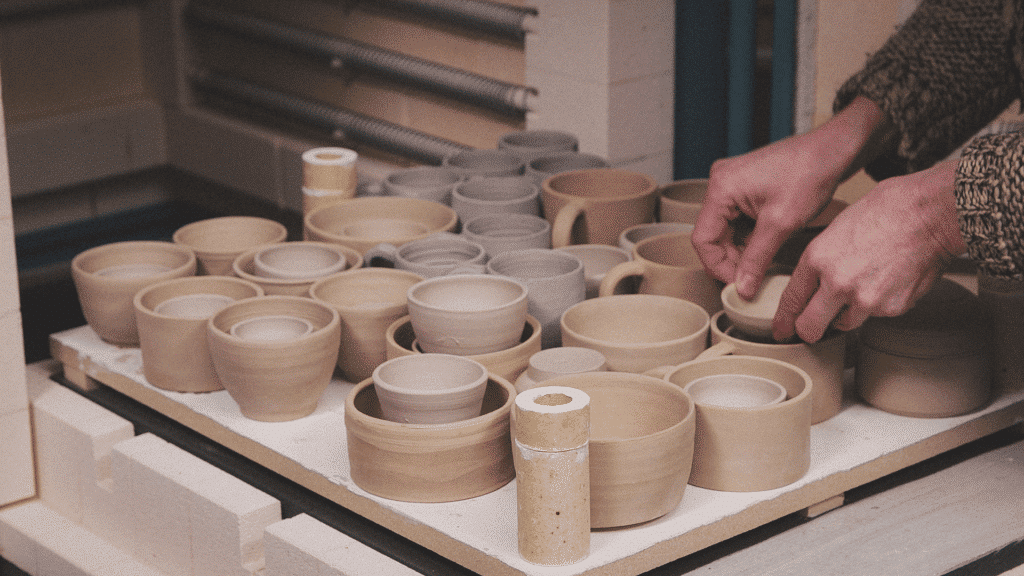Elektric kilns
An electric kiln usually has a metal exterior. The interior has a layer of insulating bricks with long grooves in them, and metal elements along those grooves. These metal elements go all the way around, and during the firing they are electrified. The electric current causes resistance in the metal, which generates heat.
That heat spreads according to three principles:
- Convection: Due to the heat generated insinde the metal, the air around the element heats up. Once the air has gotten warm enough, it rises to the top of the oven. Now a new layer of air around the metal elements heats up until it rises as well. This means the air is constantly circulating throughout the oven.
- Conduction: It’s not just the air that heats up but also the bricks around the metal elements. Once the closest bricks have warmed up, the heat spreads to the next row of bricks. Until they are all heated up.
- Radiation: Once the bricks have heated up enough, they themselves begin to emit heat. And the same thing goes for the pots being fired: once the kiln reaches a certain temperature, they themselves begin to emit heat. And that’s exactly why a well-filled kiln doesn’t need to be fired as long as a half-filled kiln: the more heat radiation gets generated, the faster the firing process.
Electric kilns usually have a digital control panel that allows you to select a specific firing schedule. A schedule like that has different phases, for which you can determine not only the temperature but also the rate at which the temperature will increase or decrease. The result is that you have a lot of control over the firing process.

Kilns that use fuel
In addition to electric ovens, there are kilns that use fuel to create heat. The most commonly used types of fuel are wood and natural gas.
There are also kilns that use other types of fuel like coal. These kilns were very popular during the time of industrial revolution, but because of the smoke and the emissions that come with burning coal, people mostly switched to gas kilns.
Wood kilns
Wood kilns are thousands of years older than coal kilns, but they are still in use today. The reason? They can achieve results that you can’t get with any other type of kiln. For example, you can create a natural glaze for your pot that originates from the ashes of the burned wood.
The downside is that a wood kiln takes a lot of work. By default the firing process takes a lot longer than with an electric or gas kiln, sometimes even three times as long. And most importantly, you need to monitor the kiln continuously. You have to feed the fire!
Gas kiln
Lastly there’s the gas kiln. This type of kiln is heated with one or more gas flames. The number and the exact positions of those gas flames varies from kiln to kiln. In addition to gas burners, you also need a chimney or exhaust pipe.
This creates an airflow within the oven, which can affect the results of the firing. For example, some gas kiln are set up in a way that most of the heat rises along the walls of the oven, meaning that a pot in the middle of the kiln will be fired slowly.

Looking to buy your own kiln?
What we’ve explained so far, is already a lot of information. But there’s a lot more to know. If you want to buy your own kiln, there are many more factors to take into account. For an electric kiln, you need to be able to power it without blowing fuses. And a gas kiln requires a gas line of course.
Then there’s the capacity in liters, and the maximum temperature the kiln can handle. If you want to fire porcelain for example, you’ll need a kiln that can handle higher temperatures than if you’re only firing stoneware.
Luckily you don’t really need to buy your own kiln, as there are many pottery stores and studios where you can have your pots fired for you. We’ve collected quite a few places that offer firing in this list. Happy firing!





